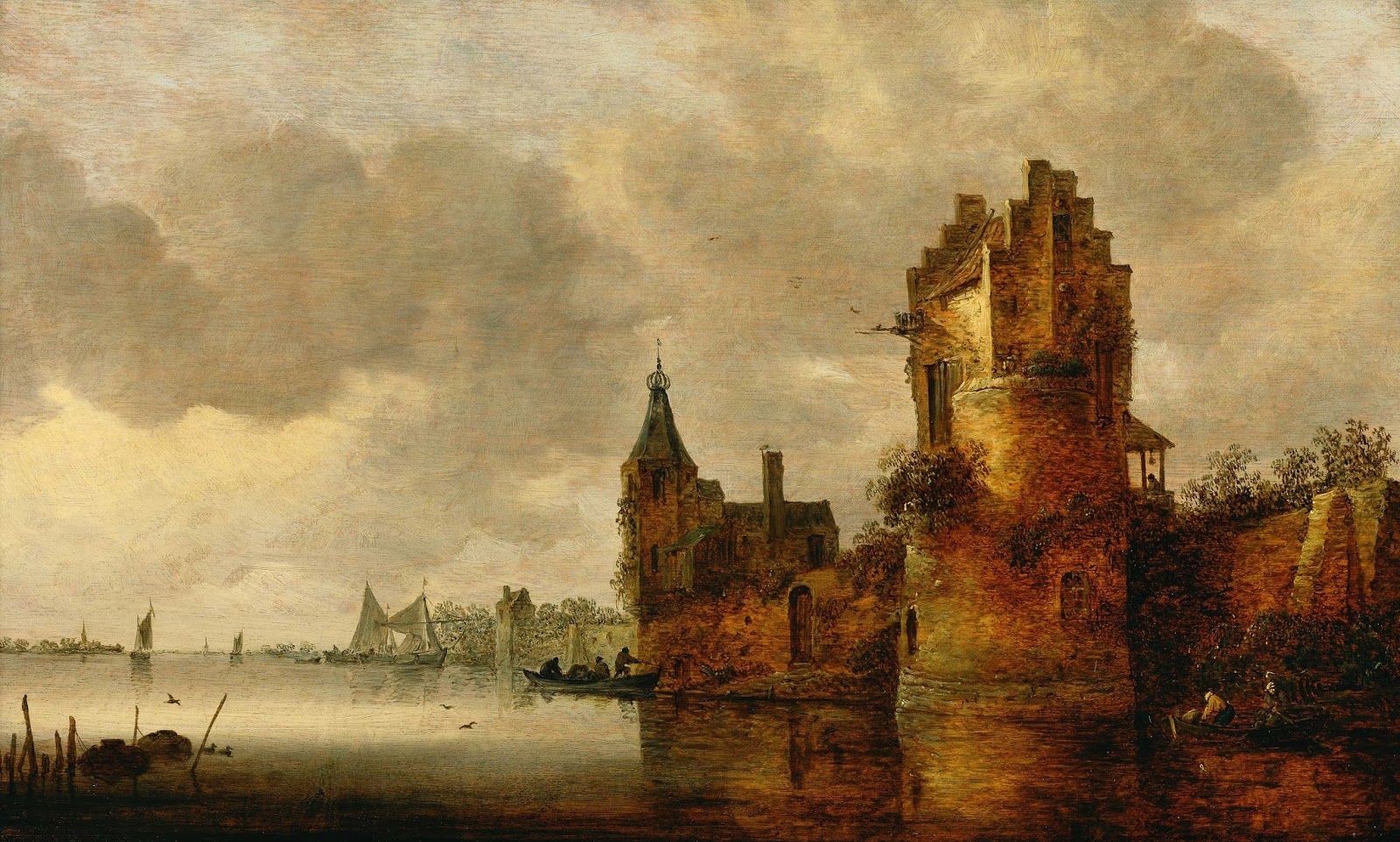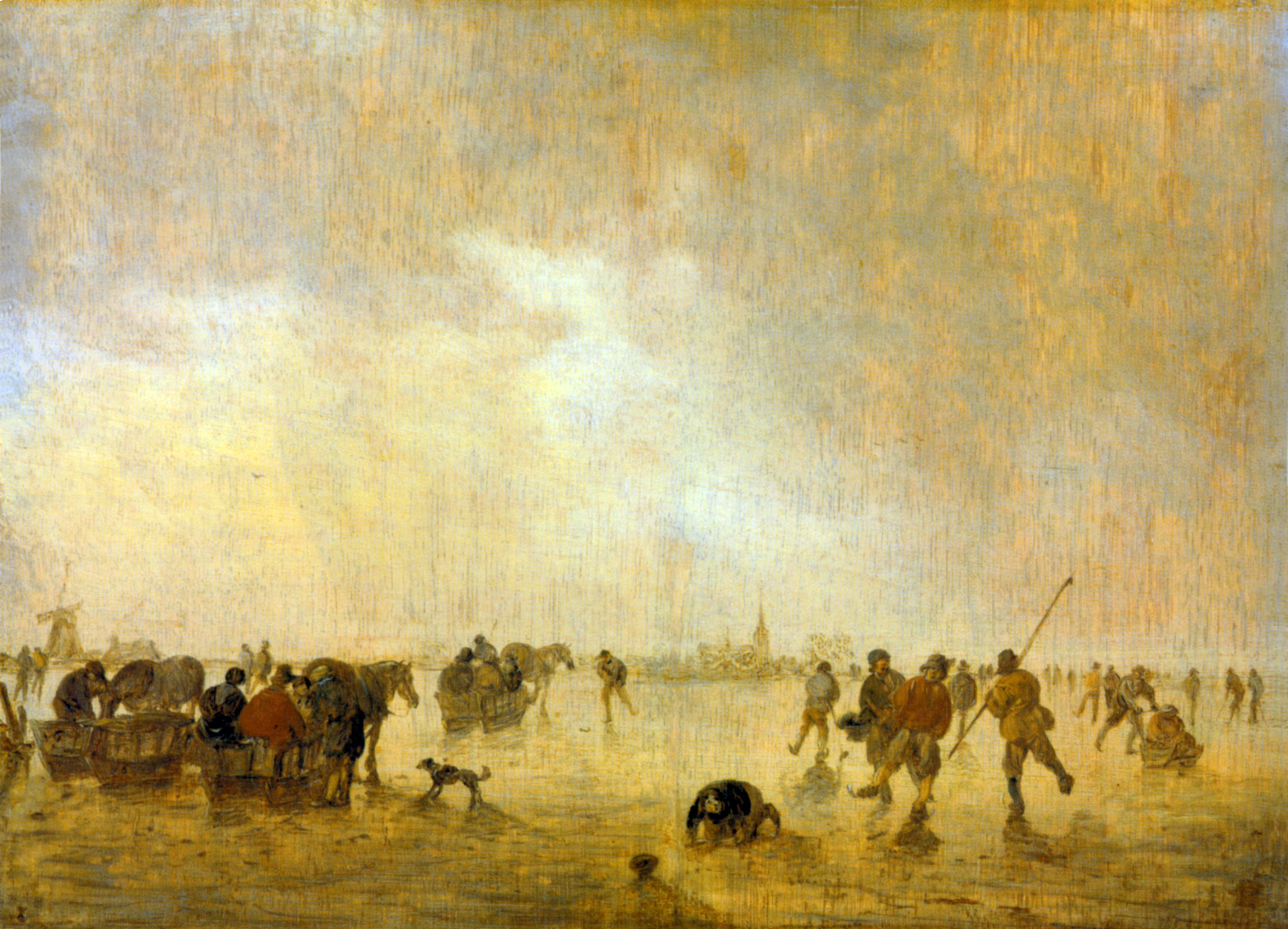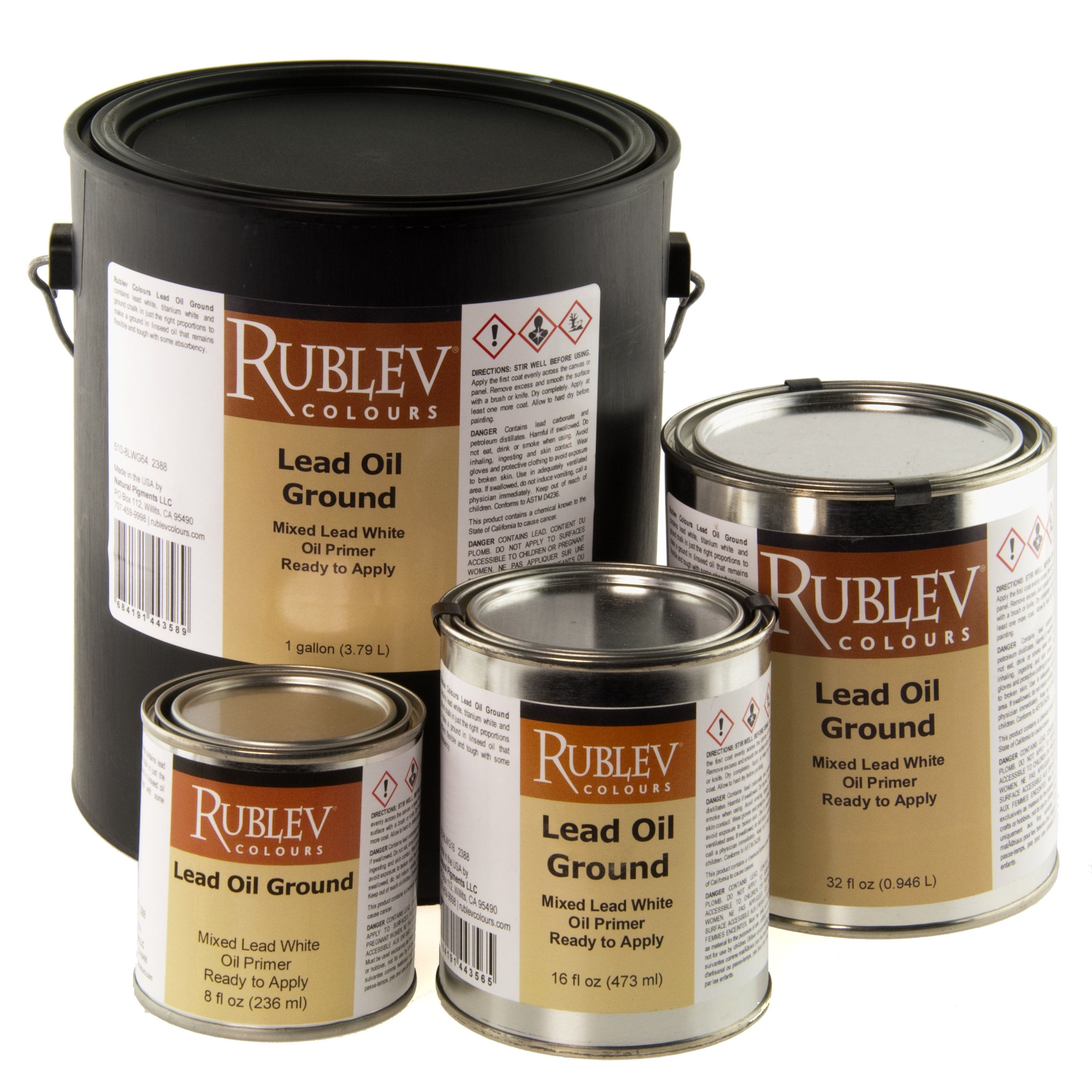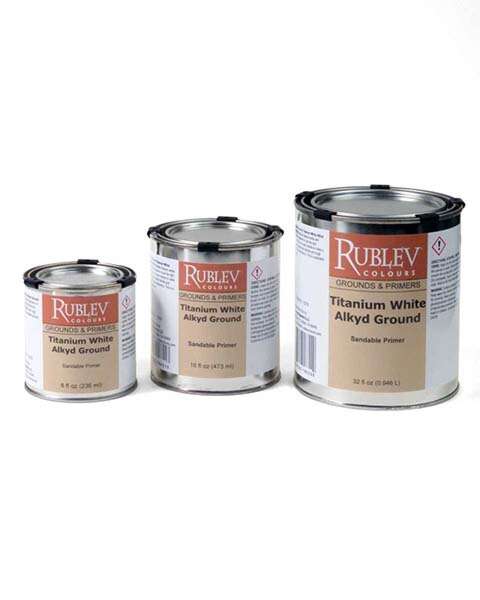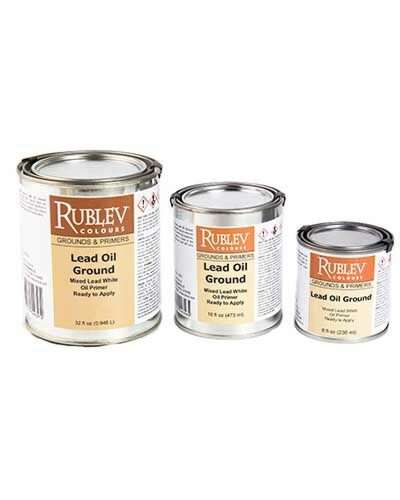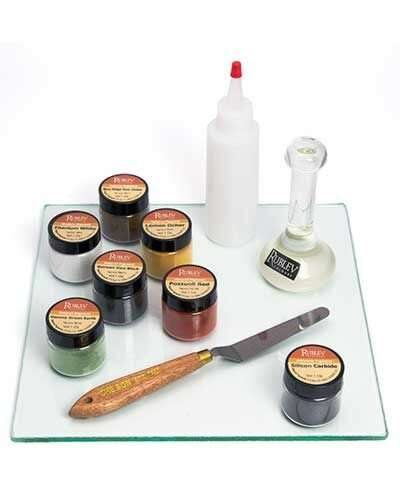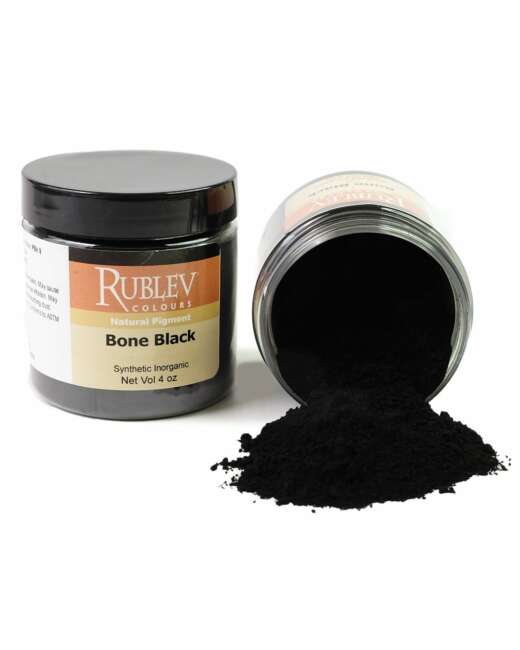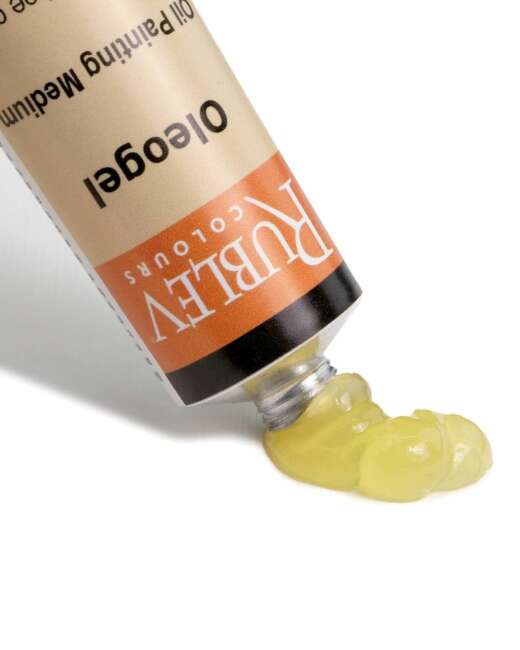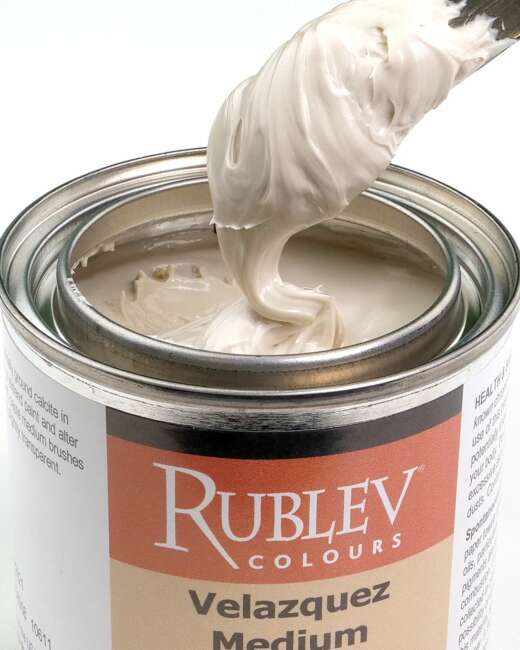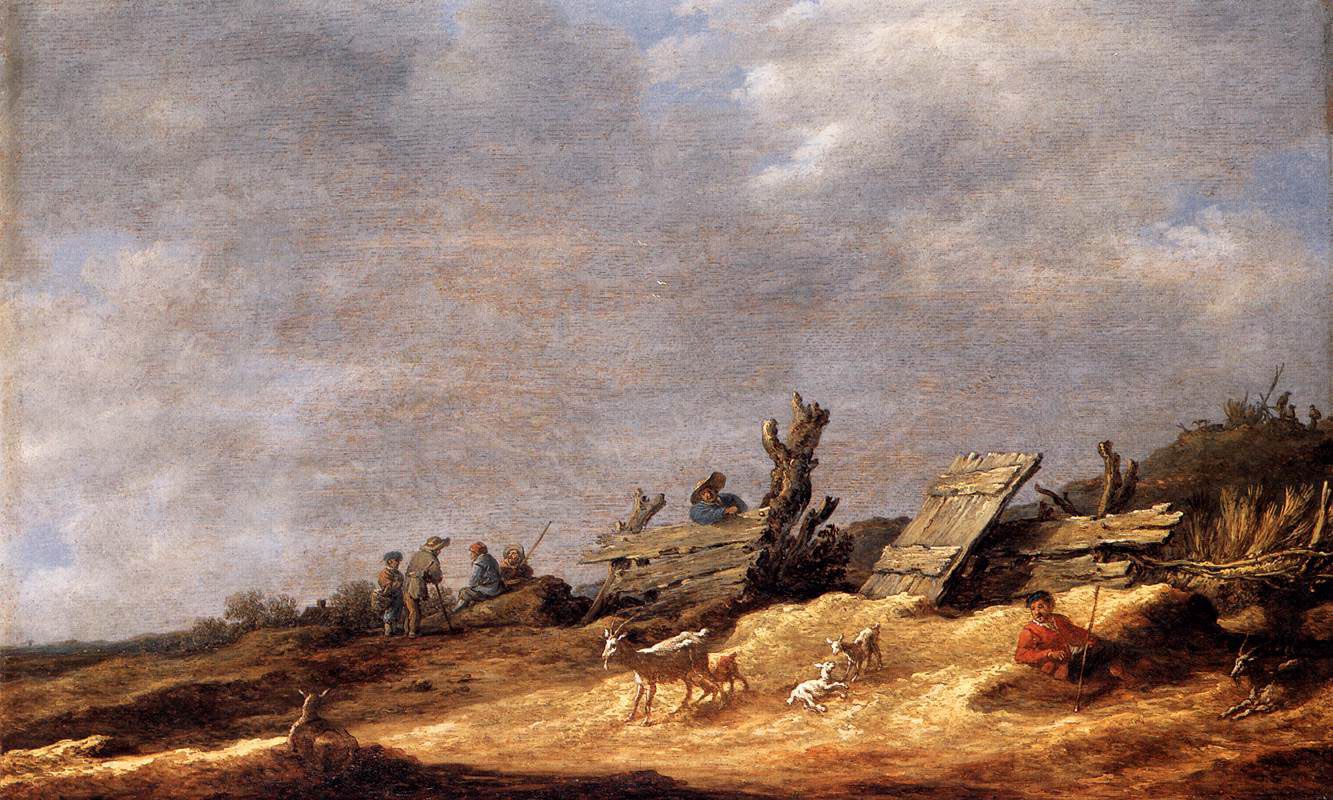
Oil paint darkens and becomes increasingly translucent as it ages. These changes may cause visible disfigurement of paintings, and although the phenomenon has been extensively studied, the causes are not definitely known at present.
One way to think of this change is to imagine your painting as a stack of colored glass that, with time, becomes increasingly darker and more translucent.
This being the case, underlying layers of paint may become increasingly visible, and if they are darker than those of the upper layers, they also exacerbate the darkening effect.
These changes can be avoided by painting over a white ground, ensuring that the ground is sufficiently thick and opaque, and building the painting from lighter to darker layers of paint. If it is not possible to build the layers from light to dark, then it is important to apply sufficiently thick and opaque layers, preferably with lead white.
The phenomenon of increasing translucency of aging oil paint films has been observed in paintings since at least the nineteenth century (see note 1), but it was observed much earlier since literary sources from the early Renaissance warn against the application of thin grounds on panels.
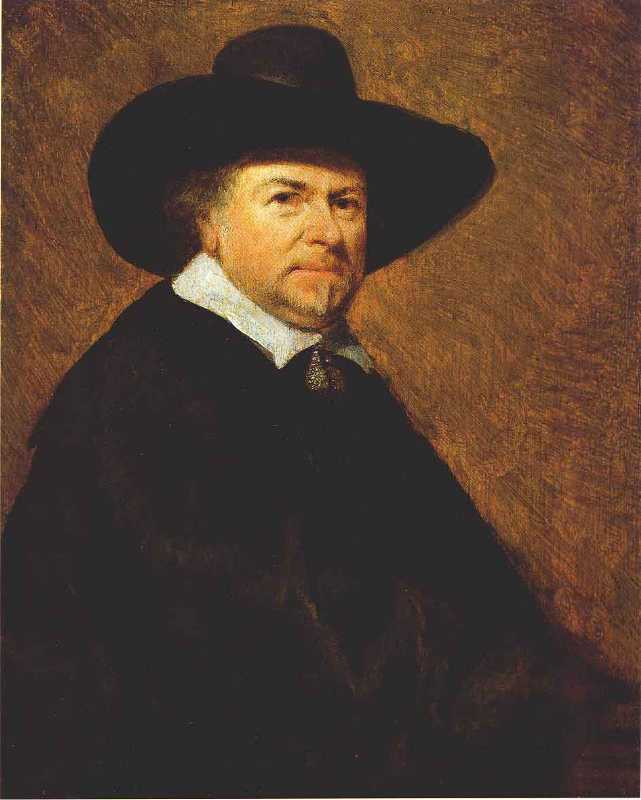 Already towards the end of the seventeenth century, the Dutch painter Gerard de Lairesse observed the phenomenon of increased transparency with regard to oil paint layers. He explicitly mentioned it in his Groot Schilderboeck, published in 1707 (van Eikema Hommes 1998). In nineteenth-century literature, authors often remarked that oil paint will become transparent and grow darker and that “dark grounds will devour the colors in time” (Carlyle 2001). There are countless pictures where increased transparency of lead-white containing paint films allows underdrawing, underpainting, or artist alterations to become more visible than originally intended (most pentimenti involve using lead white).
Already towards the end of the seventeenth century, the Dutch painter Gerard de Lairesse observed the phenomenon of increased transparency with regard to oil paint layers. He explicitly mentioned it in his Groot Schilderboeck, published in 1707 (van Eikema Hommes 1998). In nineteenth-century literature, authors often remarked that oil paint will become transparent and grow darker and that “dark grounds will devour the colors in time” (Carlyle 2001). There are countless pictures where increased transparency of lead-white containing paint films allows underdrawing, underpainting, or artist alterations to become more visible than originally intended (most pentimenti involve using lead white).
A.P. Laurie wrote about it in the first part of the twentieth century, ascribing the phenomenon to the increasing refractive index of aging oil paint films. However, it was also found to be exacerbated by the dissolution of pigments reactive to fatty acids in oil paint, such as lead white and zinc white, and the subsequent formation of mineralized metallic soaps (see note 2).
Early oil paintings from the fifteenth century, such as those by the van Eyck brothers, seemed to have overcome this problem due to their careful preparation of the ground of the painting panel and their painting technique. However, artists in subsequent centuries from the sixteenth century and later became more negligent in their preparation of the ground and painting technique or used the grain pattern of wood panels as a visual device in their paintings, such as in the landscape paintings of Jan Josephszoon van Goyen (13 January 1596–27 April 1656), this phenomenon is more often observed. Many of van Goyen’s paintings are now undisplayable because of the visible disfigurement caused by increasing the translucency of the paint layers.
The following images of van Goyen’s paintings clearly show the grain pattern of the oak panel visible through the now transparent ground and paint layers in the sky of the landscapes. Jan van Goyen would begin a painting on a support of thin oak wood. He would apply several layers of thin animal collagen glue to this panel. With a blade, he would then scrape over the entire surface a thin layer of tinted white lead to act as a ground and fill the panel's low areas. The ground was then tinted light brown, sometimes reddish, or ochre in color. In most cases, the ground was kept quite thin, so as his paintings aged and the paint film became increasingly transparent, the color and grain pattern of the wood became increasingly visible in his paintings.
Jan van Goyen, Dune Landscape, 1631, oil on oak panel, 39.5 × 62.7 cm, Herzog Anton Ulrich-Museum, Braunschweig
Jan van Goyen, Estuary with Round Tower, circa 1640, oil on oak panel, 14.5 x 24.5 inches
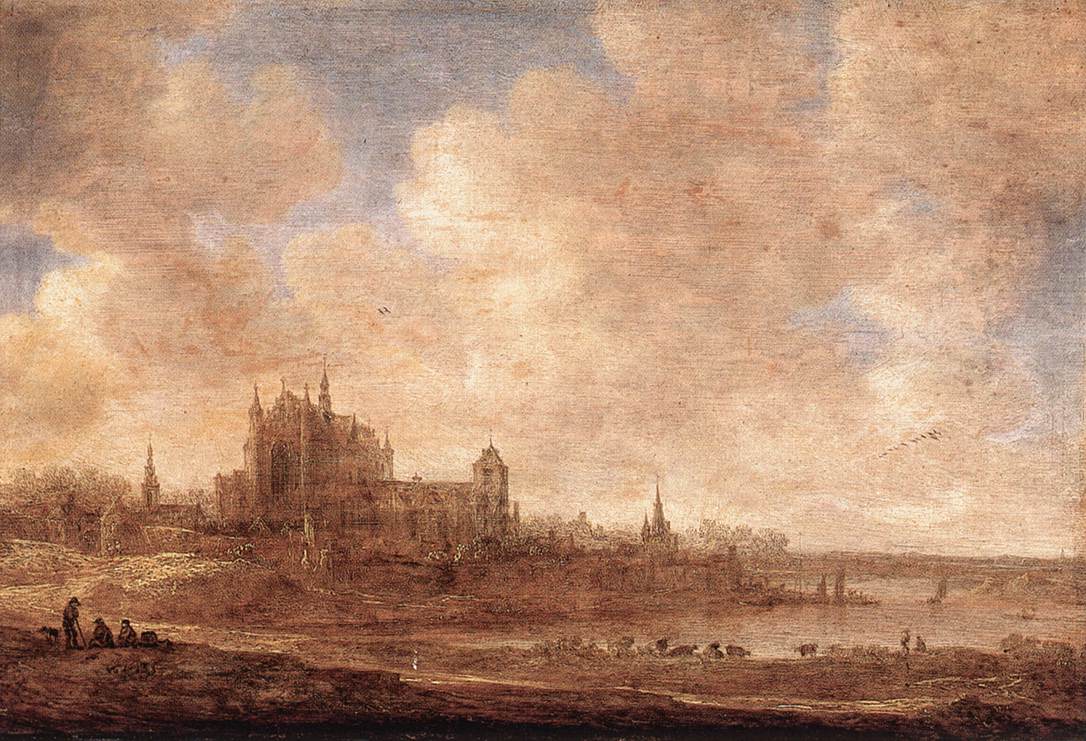
Jan van Goyen, View of Lieden, circa 1643, oil on oak panel, 39.8 x 59.9 cm, Alte Pinakothek, Munich
Jan van Goyen, Eislandschaft mit Schlittschuhläufern, 1643, oil on oak panel, 24.8 x 32 cm, Gemäldegalerie, Berlin
This phenomenon is also observed on canvas paintings by the general darkening of the painting resulting from the color of the canvas striking through the upper paint layers. This phenomenon is least observed when paintings had properly prepared grounds and opaque underpaintings.
Notes
1. In 1839, Henry Fielding refers to Jan van Goyen’s and others use of transparent grounds as being ‘the destruction of many fine pictures’, stating that ‘...Van Goyen and others have prepared or filled up the pores of the wood with their transparent vehicle, which also enabled them to shew the grain of the wood through the shades of the subject.’
2. For an interesting discussion on this topic of seventeenth-century paintings, see Annelies van Loon (2008) “The relationship between preservation and technique in the paintings of the Oranjezaal,” Color Changes and Chemical Reactivity in Seventeenth-Century Oil Paintings, p. 51–52, 236. See also Petria Noble, Annelies van Loon and Jaap J. Boon, “Selective darkening of ground and paint layers associated with the wood structure in seventeenth-century panel paintings,” in Preparation for Painting: The Artist’s Choices and Its Consequences, Joyce Townsend, et al., Editors, p. 76.
References
Carlyle, Leslie (2001) The Artist’s Assistant: Oil Painting Instruction Manuals and Handbooks in Britain 1800-1900, with reference to selected eighteenth century sources, London: Archetype Publications, pp. 177–78, 261.
de Lairesse, Gerard (1707) Groot Schilderboeck, de Erfgenaamen van Willem De Goup, op 'tRokkin, by de Valbrug.
Fielding, Theodore Henry A. (1839) On Painting in Oil and Water Colours for Landscape and Portraits, London: Ackermann.
Laurie, Arthur P. (1937) “The Refractive Index of a Solid Film of Linseed Oil Rise in Refractive Index with Age”, Proceedings of the Royal Society of London. Series A, Mathematical and Physical Sciences, Vol. 159, No. 896 (March 2, 1937), pp. 123–133.
Laurie, Arthur P. (1960) The Painter's Methods & Materials, London: Seeley Service and Company, p. 123.
Thompson, Daniel V. (1936) The Materials and Techniques of Medieval Painting, London: Allen & Unwin, pp. 36–37.
Townsend, Joyce (2008) Preparation for Painting: The Artist’s Choices and Its Consequences, Joyce Townsend, et al, Editors, London: Archetype Publications.
van Eikema Hommes, M. (1998) “Painters’ methods to prevent color changes”, Looking through Paintings, Leids Kunsthistorisch Jaarboek XI, eds. E. Hermens, A. Ouwerkerk, N. Costaras, London: Archetype Publications, pp. 91-131.
van Loon, Annelies (2008) “Darkening as a Result of Increased Transparency in 17th Century Oil Paintings”, Color Changes and Chemical Reactivity in Seventeenth-Century Oil Paintings, PhD thesis, Swammerdam Institute for Life Sciences (SILS).
 Oil Grounds for Opacity
Oil Grounds for Opacity
Rublev Colours Lead Oil Ground is a blend of white pigments and linseed oil for a semi-absorbent ground ideal for oil painting. It dries within two days to one week, depending upon local conditions, such as humidity, light, and temperature.
Rublev Colours Lead Oil Ground contains lead white, titanium white, and ground calcite (chalk) in just the right proportions to make a paint film that remains flexible and tough with some absorbency. We carefully chose a blend of alkaline-refined and bodied linseed oil so there is some penetration into the support to assure good adhesion and yet maintain sufficient holdout to establish a good foundation for paint layers. This blend of linseed oil also provides leveling, so brush and knife marks are minimized. Rublev Colours Lead Oil Ground has a high concentration of pigments for the greatest opacity, so usually, only two coats are necessary, but more coats create a smoother surface, more opaque surface.
Frequently Asked Questions
Why do oil paintings darken and become more translucent over time?
Over time, oil paintings undergo changes due to various factors, leading them to become darker and more translucent. Though the exact causes are still being studied, it's understood that the underlying layers can become increasingly visible, especially if they're darker than the surface layers.
How can artists prevent this darkening and increased translucency?
Artists can mitigate this effect by using a white, thick, and opaque ground. When constructing the painting, it's recommended to move from lighter to darker layers. If this isn't feasible, apply sufficiently thick and opaque layers, preferably with lead white.
Has this transparency issue been a recent observation?
No, this phenomenon has been noted since at least the 19th century. In fact, sources from the Renaissance warned against using thin grounds on panels. The phenomenon's effects can be seen in artworks dating back centuries.
Which artists have commented or observed this phenomenon in history?
Artists and authors such as Gerard de Lairesse, A.P. Laurie, and Jan Van Goyen have observed and commented on the increasing transparency of oil paint layers. In many literary works, including Lairesse's "Groot Schilderboeck" from 1707, these observations have been recorded.
What impact does the ground's preparation have on a painting's preservation?
The preparation of the ground can significantly influence the preservation of the artwork. Paintings like those by the van Eyck brothers from the 15th century have withstood the test of time due to their meticulous ground preparation. In contrast, artists who were more careless in their groundwork have left behind paintings that now show visible disfigurement due to increased translucency.
How did Jan van Goyen prepare his paintings, and what were the effects?
Jan van Goyen initiated his paintings on thin oak panels, applying several layers of animal collagen glue. He scraped a thin layer of tinted white lead as a ground to fill the panel's low points. Over time, as the paint on his artworks became increasingly transparent, the color and grain pattern of the wood underneath became increasingly evident.
Are these effects seen only in wood panel paintings?
No, the phenomenon is also observed in canvas paintings. Here, the painting may darken due to the canvas color penetrating through the upper paint layers. The best protection against this is to ensure properly prepared grounds and opaque underpaintings.
What happens when oil paint films age?
Aging oil paint films may increase their refractive index, which can lead to darkening. Additionally, dissolution of pigments reactive to fatty acids in the paint, like lead white and zinc white, can further exacerbate the issue.
How does the phenomenon affect the appearance of paintings?
The increased transparency of the paint layers over time can lead to underlying drawings, underpaintings, or alterations by the artist becoming more visible than intended.
How can viewers identify this phenomenon in Jan van Goyen's paintings?
In many of van Goyen’s artworks, the grain pattern of the oak panel is clearly visible through the now-transparent ground and paint layers. As the paintings aged, the color and grain pattern of the wood became more apparent.
Are there academic discussions or studies on this topic?
Yes, numerous discussions and studies delve into the topic. One notable discussion on 17th-century paintings can be found in Annelies van Loon’s work, "The relationship between preservation and technique in the paintings of the Oranjezaal."



